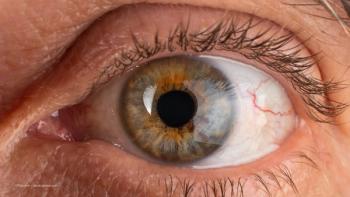
- December digital edition 2021
- Volume 13
- Issue 12
Visualizing periphery is part of a comprehensive eye exam
When preventing disease, optometrists should not give away any care
As a primary care optometrist, I make it my goal to provide complete, comprehensive eye care to patients so that I can help prevent as much disease as possible. Ultrawide field (UWF) retinal imaging, with its ability to capture both the central and peripheral retina up to 200° or more than 80% in a single noncontact digital image, plays a key role in supplementing my examinations.
By looking beyond the information obtained with traditional equipment, I can identify and medically manage a wider range of diseases, from the anterior segment to the peripheral posterior segment, until it becomes necessary to refer the patient to a retinal surgeon.
When a UWF view is crucial
UWF retinal imaging can enhance information obtained with dilation and traditional exams when it comes to evaluating for pathology that requires a 3-dimensional view of the fundus, such as papilledema, macular edema, or retinal lesions with risk factors for malignancy.1-3 Studies even indicate that the technology can be superior to a dilated exam for examining peripheral retinal lesions like tears, holes, nevi, and hemes.4,5
Improving the diagnosis and treatment of patients with diabetes is certainly top of mind as the American population ages, and UWF’s utility in this regard is well established.
Several studies looking at the assessment of diabetic retinopathy (DR) have shown strong correlations between conventional ETDRS standard 7-fi eld color fundus photographs and UWF images.6-10
In fact, the 200° span of UWF color imaging and UWF fluorescein angiography (FA) reveals more pathology than standard photographic fields, including peripheral microaneurysms, neovascularization, vascular nonperfusion, and vascular leakage. Without the UWF image review, these early signs in the far periphery might be missed.11-13
The implications of UWF extend to treatment selection, planning, and outcomes. We see UWF imaging increasingly incorporated into clinical trial protocols for DR treatments such as panretinal photocoagulation in proliferative disease, anti-VEGF injections, and combination therapy incorporating UWF FA-guided laser treatment.14-18 Use of UWF has expanded
Originally our practice incorporated UWF as a screening device for patients who were presenting for comprehensive eye exams without medical complaints. We now use Optos to augment our other peripheral retinal examinations. If we are following a patient with flashes and fl oaters, prior retinal holes, tears, or other peripheral pathology, findings identified on UWF imaging help guide and focus the dilated, Goldmann 3-mirror, and scleral depression exams.
Side-by-side comparison of UWF images visit after visit allows more robust monitoring of changes over time while providing more effective documentation. Rounding out our imaging modalities are anterior segment photography, standard fundus photography for 45° and closer, and optical coherence tomography (OCT). With Optos, it is not unusual for us to identify small tears out in the periphery that the retinal surgeon was not able to see before we shared the UWF images. It can be difficult to see small zones with traditional techniques. In fact, some of our referring specialists have added the technology because of this.
Practice flow, superior care
Our technicians conduct UWF imaging during the primary care exam; of those patients who have had Optos done in the past, close to 95% opt to have it repeated at the next visit. For new patients, the staff member explains that the exam allows me to see a 200° view of the retina in image and that the picture becomes a lasting portion of their chart. They are informed that the $39 fee is not covered by insurance, and the acceptance rate in this group is well over 80%. UWF technology differentiates our practice.
Our patients often remark that they feel they are receiving a better eye exam than they have in the past with other providers. Importantly, Optos images readily lend themselves to patient education, allowing me to show various ocular structures while I explain, for example, why the optic nerve is important, why it’s being monitored, and what I see. I use information gathered from all imaging and testing modalities to keep patients well informed, whether it is UWF images, corneal topography, or OCT. I believe in helping patients achieve a comprehensive understanding of their visual system.
Our practice was an earlier adopter of UWF, and over the years we have upgraded Optos devices 3 times. We have become increasingly confident in the technology, gaining more knowledge of what we can see with the Optos images. The simplicity and completeness of the single capture is a big advantage of Optos, along with the option to view a montage of images. We perform superior and inferior eye steering during all patient screenings.
Our techs are well versed in implementing the device, and we obtain close to a 360° view for every single patient. The images are far superior to those acquired with technology that requires a minimum of 2 images to view 200° horizontally. The platform is very simple to use, so training our technicians has been straightforward, making for a seamless incorporation of UWF into our standard screening protocol. We continue to assess new technologies, but so far, we have found nothing that beats the ease of use and scope of Optos.
Screening game pearls
Optometrists should select screening tools that elevate their primary care exam, enhancing their ability to actively screen for any pathology— everything from glaucoma suspects to macular degeneration, to peripheral retinal hemorrhages, to venous nicking. We should approach our routine exam with the mindset that we are going to detect any eye disease and monitor everything we can see in the retinal and anterior segment at subsequent follow-up visits based on AOA Clinical Practice Guidelines. Do not just give away that care. It is important that the practice team believes in and embraces all technology incorporated into the exam. When the staff understands and conveys the technology’s benefits, patient acceptance will follow.
UWF imaging is not just something to sell or a way to avoid dilation; it is essential in providing the best and most efficient care. We dilate just as many patients as we did before incorporating Optos because now we are medically managing conditions that we would have missed on routine dilated screening—particularly in those patients without symptoms (see Figures 1 and 2). Optos UWF imaging enables me to provide a better level of care.
References
1. American Academy of Ophthalmology. Preferred Practice Pattern Guidelines. Primary Open Angle Glaucoma. San Francisco, CA; American Academy of Ophthalmology; 2015. Available at www.aao.org/ppp.
2. Taylor HR, Vu HT, McCarty CA, Keeffe JE. The need for routine eye examinations. Invest Ophthalmol Vis Sci. 2004;45(8):2539-42. doi:10.1167/iovs.03-1198
3. Siegel BS, Thompson AK, Yolton DP, Reinke AR, Yolton RL. A comparison of diagnostic outcomes with and without pupillary dilation. J Am Optom Assoc. 1990;61(1):25-34.
4. Shoughy SS, Arevalo JF, Kozak I. Update on wide- and ultrawidefield retinal imaging. Indian J Ophthalmol. 2015;63(7):575-81. doi:10.4103/0301-4738.167122
5. Brown K, Sewell JM, Trempe C, Peto T, Travison TG. Comparison of image-assisted versus traditional fundus examination. Eye Brain. 2013;5:1-8. doi:10.2147/EB.S37646
6. Kaines A, Oliver S, Reddy S, Schwartz SD. Ultrawide angle angiography for the detection and management of diabetic retinopathy. Int Ophthalmol Clin. 2009;49(2):53-59. doi:10.1097/IIO.0b013e31819fd471
7. Kernt M, Hadi I, Pinter F, et al. Assessment of diabetic retinopathy using nonmydriatic ultra-widefield scanning laser ophthalmoscopy (optomap) compared with ETDRS 7-field stereo photography. Diabetes Care. 2012;35(12):2459-2463. doi:10.2337/dc12-0346
8. Kernt M, Pinter F, Hadi I, et al. [Diabetic retinopathy: comparison of the diagnostic features of ultra-widefield scanning laser ophthalmoscopy Optomap with ETDRS 7-field fundus photography]. Ophthalmologe. 2011;108(2):117-123. doi:10.1007/ s00347-010-2226-4
9. Silva PS, Cavallerano JD, Sun JK, Noble J, Aiello LM, Aiello LP. Nonmydriatic ultrawide field retinal imaging compared with dilated standard 7-field 35-mm photography and retinal specialist examination for evaluation of diabetic retinopathy. Am J Ophthalmol. 2012;154(3):549-559.e2. doi:10.1016/j.ajo.2012.03.019
10. Aiello LP, Odia I, Glassman AR, et al; Diabetic Retinopathy Clinical Research Network. Comparison of Early Treatment Diabetic Retinopathy Study standard 7-field imaging with ultrawide-field imaging for determining severity of diabetic retinopathy. JAMA Ophthalmol. 2019;137(1):65-73. doi:10.1001/jamaophthalmol.2018.4982
11. Wessel MM, Aaker GD, Parlitsis G, Cho M, D’Amico DJ, Kiss S. Ultra-wide-field angiography improves the detection and classification of diabetic retinopathy. Retina. 2012;32(4):785-791. doi:10.1097/ IAE.0b013e3182278b64
12. Kong M, Lee MY, Ham DI. Ultrawide-field fluorescein angiography for evaluation of diabetic retinopathy. Korean J Ophthalmol. 2012;26(6):428-431. doi:10.3341/kjo.2012.26.6.428
13. Silva PS, Cavallerano JD, Sun JK, Soliman AZ, Aiello LM, Aiello LP. Peripheral lesions identified by mydriatic ultrawide field imaging: distribution and potential impact on diabetic retinopathy severity. Ophthalmology. 2013;120(12):2587-2595. doi:10.1016/j. ophtha.2013.05.004
14. Muqit MM, Young LB, McKenzie R, et al. Pilot randomised clinical trial of Pascal TargETEd Retinal versus variable fluence PANretinal 20 ms laser in diabetic retinopathy: PETER PAN study. Br J Ophthalmol. 2013;97(2):220-227. doi:10.1136/bjophthalmol-2012-302189
15. Wang Y, Muqit MM, Stanga PE, Young LB, Henson DB. Spatial changes of central field loss in diabetic retinopathy after laser. Optom Vis Sci. 2014;91(1):111-120. doi:10.1097/OPX.0000000000000103
16. Boynton GE, Stem MS, Kwark L, Jackson GR, Farsiu S, Gardner TW. Multimodal characterization of proliferative diabetic retinopathy reveals alterations in outer retinal function and structure. Ophthalmology. 2015;122(5):957-967. doi:10.1016/j.ophtha.2014.12.001
17. Leicht SF, Kernt M, Neubauer A, et al. Microaneurysm turnover in diabetic retinopathy assessed by automated RetmarkerDR image analysis--potential role as biomarker of response to ranibizumab treatment. Ophthalmologica. 2014;231(4):198-203. doi:10.1159/000357505
18. Suñer IJ, Peden MC, Hammer MK, Grizzard WS, Traynom J, Cousins SW. RaScaL: a pilot study to assess the efficacy, durability, and safety of a single intervention with ranibizumab plus peripheral laser for diabetic macular edema associated with peripheral nonperfusion on ultrawidefield fluorescein angiograpy. Ophthalmologica. Published online November 26, 2014. doi:10.1159/000367902
Articles in this issue
almost 4 years ago
A chance to be the heroalmost 4 years ago
Careful evaluation of ophthalmic diagnostics in retinal casesalmost 4 years ago
Examining the essential role of the lymphatic system, at your disposalalmost 4 years ago
Viewpoints: Remote monitoring centers for dry AMDalmost 4 years ago
Five ways to stand out with specialty contact lensesalmost 4 years ago
Dry eye treatments appear in unlikely placesalmost 4 years ago
Retinal findings present in pediatric casealmost 4 years ago
2021 American Academy of Optometry meeting recapalmost 4 years ago
Effects of pregnancy on keratoconusabout 4 years ago
Eye drops for presbyopia treatment receive FDA approvalNewsletter
Want more insights like this? Subscribe to Optometry Times and get clinical pearls and practice tips delivered straight to your inbox.



















































.png)


